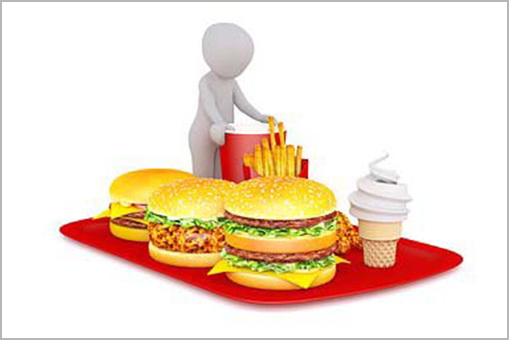Basic information
At the 60th World Health Organization (WHO) Assembly in 2007, Member States reached an agreement to “develop a set of recommendations on marketing foods and non-alcoholic beverages to children” as part of the implementation of the Global Strategy on the prevention and control of non-communicable diseases (1). This document proposes the adoption of the aforementioned set of recommendations in the form of an International Code of Marketing based on the experiences of Consumers International and the International Obesity Task Force.
Consumers International (CI) is a global federation of consumer organisations with over 220 members in 115 countries from all regions of the world. These proposals are based on a consultation of CI’s membership.
The International Obesity Task Force (IOTFY) is the policy section of the International Association for the Study of Obesity, which has over 10,000 members in more than 50 countries and regional associations around the world. These proposals take into consideration IOTF’s Sydney Principles, adopted with the aim of achieving a high level of protection for children against the commercial promotion of foods and beverages (2).
Rationale for developing a set of recommendations
The Global Strategy on the Prevention and Control of Non-Communicable Diseases
The Global Strategy on the Prevention and Control of Non-Communicable Diseases (3) recognised the enormous suffering caused by such diseases, as well as the need for WHO to assume a leadership role in promoting global action against them, including the promotion and adoption of international intersectoral policies, regulations and other appropriate measures that minimise the effect of the major risk factors.
The Global Strategy on Diet, Physical Activity and Health
The Global Strategy on Diet, Physical Activity and Health (4) recognises that the burden of non-communicable diseases has rapidly increased at the global level and that unhealthy nutrition and a lack of physical activity are among the leading causes of the major non-communicable diseases, including cardiovascular disease, Type 2 diabetes and some types of cancer. Increased consumption of energy-dense, nutrient-poor foods that are high in fat, sugar and salt is identified as a risk factor. Dietary recommendations for populations and individuals should include the following:
- achieve energy balance and optimal weight
- limit energy intake from saturated and unsaturated fats, and shift fat consumption away from saturated to unsaturated fats, and towards the elimination of trans-fatty acids
- increase consumption of fruits, vegetables and legumes, whole grains and nuts
- reduce sugar intake
- reduce salt (sodium) consumption from all sources and use only iodised salt
The Global Strategy also recognises that mortality, morbidity and disability attributable to non-communicable diseases currently represent the greatest burden, which continues to grow in developing countries. It recognises that governments – in co-operation with other stakeholders – play a central role in creating an environment that empowers and encourages a healthy lifestyle.
In this context, the role of marketing, advertising, sponsorship and promotion is highlighted. Member States are alerted to the fact (paragraph 40) that “Food advertising affects food choices and influences dietary habits”, and are advised to “work with consumer groups and the private sector (including advertisers) to develop appropriate multi-sectoral approaches to deal with the marketing of food to children, as well as such issues as sponsorship, promotion and advertising”.
The Global Strategy also recommends (paragraph 61) that the private sector “practise responsible marketing that supports the Strategy, particularly with regard to the promotion and marketing of foods high in saturated fats, trans-fatty acids, free sugars, or salt, especially to children”.
UN Convention on the Rights of the Child
The UN Convention on the Rights of the Child (5) establishes that the best interests of the child should be the primary consideration in all actions concerning children’s rights (Article 3). It also states (Article 24) that children have the right to enjoy the highest attainable standard of health. Member States who are Parties to the Convention are required to take necessary measures to fully implement this right, including combating disease and malnutrition by providing adequate nutritious foods and ensuring that all segments of society – especially parents and children – are informed, have access to education and are supported in the use of basic knowledge of child health and nutrition. It also recognises the importance of international co-operation in order to fully realise this right, taking particular account of the needs of developing countries.
European Charter on Counteracting Obesity
The 53 Member States of the WHO European Region have committed themselves to implementing the European Charter on Counteracting Obesity (6), which recognises that the epidemic of obesity poses one of the most serious public health challenges in the WHO European Region. The Charter includes in its framework for action “the adoption of regulations to substantially reduce the extent and impact of commercial promotion of energy-dense foods and beverages, particularly to children, with the development of international approaches, such as a code on marketing to children in this area” (Article 2.4.7).
Evidence for action
WHO Technical Meeting on Marketing of Food and Non-Alcoholic Beverages to Children
The WHO Technical Meeting held from 2–5 May 2006 in Oslo (Norway) on the marketing of food and non-alcoholic beverages to children (7) concluded that, thanks to scientific research, strong evidence exists of the link between the commercial promotion of foods and beverages on the one hand, and poor nutrition of children on the other. The evidence shows that:
- there is extensive food and beverage promotion to children
- children are familiar with prices and engaged with this promotion
- the promotion is overwhelmingly for energy-dense, micronutrient-poor foods and as such undermines recommendations for a healthy diet
- this type of promotion has a deleterious effect on children’s knowledge of food, attitudes, choice and consumption of food.
A systematic review of the extent, nature and effects of food promotion to children commissioned by the WHO (8) also indicates that children are likely to respond to advertising in the same way, regardless of the part of the world they live in. However, it suggests that children in developing countries may be more vulnerable to food promotion because they are less familiar with the world of advertising; they are a key entry point for developed country firms because they are more flexible and responsive than their parents, and because they may associate developed country brands with desirable attributes.
The proposed approach
The set of recommendations that we propose is based on the following key considerations:
- The importance of restricting the promotion of energy-dense, nutrient-poor foods and beverages that are high in fat, sugar or salt to children, while continuing to allow the promotion of foods that are in line with WHO dietary recommendations (9).
- The public health imperative which ensures that all children are protected.
- The importance of ensuring that all forms of current and potential promotional marketing techniques are incorporated and treated equally.
This is consistent with the conclusion of the WHO Technical Meeting that: “The goal of any regulatory action should be to protect children from marketing which adversely affects their diets by substantially reducing the volume and impact of commercial promotion of energy-dense, micronutrient-poor food and beverages to children. Moderate increases in the promotion of better foods are deemed insufficient”.
Where appropriate, we have drawn on the experience of relevant documents, including existing regulations, codes and expert recommendations.
Proposal for an International Code on Marketing of Foods and Non-Alcoholic Beverages to Children
Preamble
The Member States of the World Health Organization:
- CONSCIOUS of the high rates of non-communicable diseases globally and the burden that this presents in both developed and developing countries;
- RECOGNISING that the spread of non-communicable diseases is a global problem with serious consequences for public health that calls for the widest possible international co-operation and the participation of all countries in an effective, appropriate and comprehensive international response;
- CONCERNED about the impact of marketing techniques, including advertising, promotion and sponsorship, which encourage children to consume energy-dense, nutrient-poor foods high in fat, sugar or salt;
- ASSERTING that poor diet is an important risk factor for non-communicable diseases;
- ACKNOWLEDGING that the UN Convention on the Rights of the Child affirms the right of children to the highest attainable standard of health and protection from exploitation, and recognises the importance of ensuring that all segments of society – especially parents and children – are supported in the use of basic knowledge of child health and nutrition;
- CONVINCED of the importance of ensuring that food marketing, particularly to children, does not undermine efforts to meet dietary guidelines and goals established by the World Health Organization (WHO);
- RECOGNISING the value of the recommendations from the WHO Technical Meeting on Marketing of Food and Non-Alcoholic Beverages to Children that there is now a strong scientific rationale linking commercial promotion of foods and beverages to poor diets in children and that food promotion is overwhelmingly for energy-dense, micronutrient poor foods, which undermines recommendations for a healthy diet;
- AWARE of the wide range of marketing techniques and media that are used to promote foods to children;
- RECOGNISING that national and domestic regulations and standards should ensure that advertising is legal, decent, honest, true, fair and not misleading regardless of the product or audience;
- ACKNOWLEDGING that the WHO’s International Code of Marketing of Breast Milk Substitutes and subsequent relevant World Health Assembly recommendations already apply to the marketing of breast milk substitutes, including infant formula; these are therefore outside the scope of this Code;
- AWARE of new methods for nutrient profiling which can be used to differentiate between healthy and less healthy foods;
- BELIEVING that commercial operators have a responsibility to ensure that their marketing practices do not undermine children’s health irrespective of national borders;
- COGNISANT of the need to implement comprehensive multi-sectoral measures to avoid exacerbating health inequalities;
Therefore:
Hereby agree as follows:
Article 1. Aim of the Code
This Code aims to protect present and future generations from the damaging health, social and economic consequences of consumption of energy-dense, nutrient-poor foods high in fat, sugar or salt, and promote responsible food marketing to children that supports the Global Strategy on Diet, Physical Activity and Health by restricting the marketing of these products to children.
Article 2. Scope of this Code
This Code applies to all forms of food marketing to children.
Article 3. Definitions
“Brand” means any name, logo, slogan or trademark associated with or owned by the food company.
“Children” means people under the age set by Member State legislation and in any case, no less than 16 years old.
“Commercial operators” means all industries that have a role in advertising or promoting foods to children, including food companies, marketers and the advertising industry.
“Food” means any substance, whether processed, semi-processed or raw, which is intended for human consumption, and includes drinks, chewing gum and any substance which has been used in the manufacture, preparation or treatment of “food” but does not include cosmetics or tobacco or substances used only as drugs (10).
“Food marketing” means a trade practice whose express or implied purpose is to directly or indirectly promote the sale or consumption of a food product or brand, or whose effect is to do so. This includes but is not limited to promotion through the use of all written and electronic media, including television, radio, cinema, Internet, text messaging and other new media, product placement, “viral” marketing, information services, magazines, posters, sponsorship, product packaging, product design and point of sale positioning.
Article 4. Energy-dense, nutrient-poor foods high in fat, sugar and salt
4.1. There should be no marketing to children of energy-dense, nutrient poor foods that are high in fat, sugar or salt, and brands associated with such foods.
4.2.(1) Categorisation of energy-dense, nutrient-poor foods that are high in fat, sugar or salt, and brands associated with such foods for the purpose of implementing this Code should be based on dietary recommendations established by WHO (11) and defined by nutrient profiling.
4.2. (2) WHO should propose an international approach to the categorisation of energy-dense, nutrient-poor foods that are high in fat, sugar or salt within a year of the adoption of these recommendations.
Article 5. Broadcast marketing
5.1. When determining which media containing broadcast advertisements and promotions the restriction laid down in Article 4.1 should apply to, both the absolute number of children likely to be watching or listening, and the number of children as a proportion of the overall audience should be taken into account
5.2. These restrictions include, but are not limited to, all advertisements and promotions broadcast between the hours of 06.00 and 21.00.
Article 6. Non-broadcast marketing
6.1. When determining whether non-broadcast marketing techniques are aimed at children, and thus prohibited under Article 4.1, the following factors should be taken into account:
- the overall presentation, features, content, form and manner
- the language, colours and images used
- whether children are represented
- the target audience of the media or place in which the promotion is seen
- whether children are potential recipients of the promotion in significant numbers regardless of the target audience
- the use of people, personalities, celebrities, their associates or other persons or individuals whose name or image may be familiar to or appeal to children
- the use of cartoon characters including brand owned and licensed ones
- the inclusion of free gifts, toys or collectible items that appeal to children
- the inclusion of competitions, vouchers or games that appeal to children
- the shape or novelty value of the food or food packaging
- sponsorship of materials, products, people, events, projects, cultural, artistic or sports activities or places popular with children, or a significant child audience.
6.2. Products that are clearly produced for consumption on special occasions and are clearly special treats (e.g. birthday cakes, confectionery for cultural or religious festivals) may be exempted from Article 6.1.
6.3 Settings where children are gathered should be free from commercial inducements to consume energy-dense, nutrient-poor foods that are high in fat, sugar or salt. Such settings include but are not limited to nurseries, schools, school grounds and pre-school centres, playgrounds, family and child clinics and paediatric services.Article 7. Indirect advertising to parents or adults
7.1. Energy-dense, nutrient-poor foods that are high in fat, sugar or salt, or brands associated with such foods should not be promoted to adults responsible for children as being suitable for children. This includes stating, suggesting or implying:
- that an adult who purchases such a food is a better, more intelligent, more caring or more generous adult than one who does not do so;
- that the child they are responsible for, when fed these products, will be more intelligent and gifted; or
- that a balanced and varied diet cannot provide adequate quantities of nutrients in general.
Article 8. Interpretation
8.1. The spirit as well as the letter of this Code applies.
8.2. This Code lays down minimum standards only. All Parties are encouraged to implement measures going beyond those required by this Code. At the same time, nothing in this Code should prevent any of the Parties from imposing stricter requirements in order to ensure a higher level of human health, provided that such requirements are compatible with international law.
8.3. In setting and implementing their public health policies, all Parties should act to protect these policies from commercial and other vested interests of commercial operators in accordance with national law.
Article 9. Implementation
9.1. Governments should take action to give effect to all provisions of these recommendations through the adoption of legislation, regulation or other statutory measures.
Article 10. Monitoring and enforcement
10.1. Monitoring and application of this Code lies with governments acting individually and collectively through the WHO.
10.2. Independently of any other measures taken to implement this Code, manufacturers of products within the scope of this Code should regard themselves as responsible for monitoring their marketing practices according to the provisions of this Code, and should take steps to ensure that their conduct conforms to it at every level.
10.3.1. Non-governmental organisations, professional groups, institutions and individuals concerned should be encouraged to draw the attention of governments, manufacturers and other relevant operators to activities which are incompatible with the provisions of this Code, so that appropriate action can be taken.
10.3.2 This encouragement may include but is not limited to according consumers a private right of action to challenge violations of the Code.
10.4. Commercial operators within the scope of this Code should inform each member of their marketing and advertising personnel of this Code and their responsibilities under it.
10.5. In accordance with Article 62 of the Constitution of the WHO, Member States should communicate annually to the Director-General information on action taken to give effect to this Code.
10.6. The Director-General should report annually to the World Health Assembly on the status of the implementation of this Code, while the World Health Organization should, on request, provide technical support to Member States preparing national legislation or regulations, or taking other appropriate measures to implement this Code.
Consumers International (CI)
Tel: + 44 20 7226 6663
Fax: + 44 20 7354 0607
Email: consint@consint.org
www.consumersinternational.orgConsumers International (CI) is the only independent global campaigning voice for consumers. With over 220 member organisations in 115 countries, we are building a powerful international consumer movement to help protect and empower consumers everywhere.
Consumers International is a non-profit company; company number 4337856; registered charity number 1122155.
IASO – IOTF
231 North Gower Street
London NW1 2NR
UK
Tel: + 44 (0) 20 7691 1900
Fax: + 44 (0) 20 7387 6033
www.iaso.org and www.iotf.orgThe International Association for the Study of Obesity (IASO) is an umbrella organisation for over 10,000 professional researchers and clinicians in over 50 national and regional obesity associations.
The IASO’s mission is to improve global health by promoting the understanding of obesity and weight-related diseases through scientific research and dialogue, whilst encouraging the development of effective policies for their prevention and management.
The IOTF is a global network of expertise, a research-led think tank and advocacy arm of the International Association for the Study of Obesity.
The IOTF is working to alert the world to the growing health crisis threatened by soaring levels of obesity. It works with the World Health Organization, other NGOs and stakeholders to address this challenge.
The IOTF’s mission is to inform the world about the urgency of this problem and to persuade governments that the time to act is now.
IASO/EASO is a non-profit company. Registered charity number (IASO 1076981, EASO 1111288); registered company number (IASO 3802726, EASO 5483950); registered in England and Wales, United Kingdom.
References:
- Prevention and Control of Non-communicable Diseases: Implementation of the Global Strategy, WHA60.23, 23 May 2007.
- www.iotf.org/sydney/principles
- The Global Strategy on the Prevention and Control of Non-Communicable Diseases, World Health Assembly Resolution 53.17.
- The Global Strategy on Diet, Physical Activity and Health, World Health, World Assembly Resolution 57.17.
- United Nations Convention on the Rights of the Child, General Assembly Resolution 44/25 of 20 November 1989.
- European Charter on Counteracting Obesity, World Health Organization Europe, Istanbul, 16 November 2006.
- Marketing of Food and Non-alcoholic Beverages to Children, Report of a WHO Forum and Technical Meeting, Oslo, 2-5 May 2006.
- The Extent, Nature and Effects of Food Promotion to Children: A Review of the Evidence; Professor Gerard Hastings et al, World Health Organization, July 2006.
- Diet, Nutrition and the Prevention of Chronic Diseases, Report of a Joint WHO/FAO Expert Consultation, WHO Technical Report 916, 2003.
- Codex Commission Procedural Manual (FAO/WHO).
- Diet, Nutrition and the Prevention of Chronic Diseases, Report of a Joint WHO/FAO Expert Consultation, WHO Technical Report 916, 2003.






